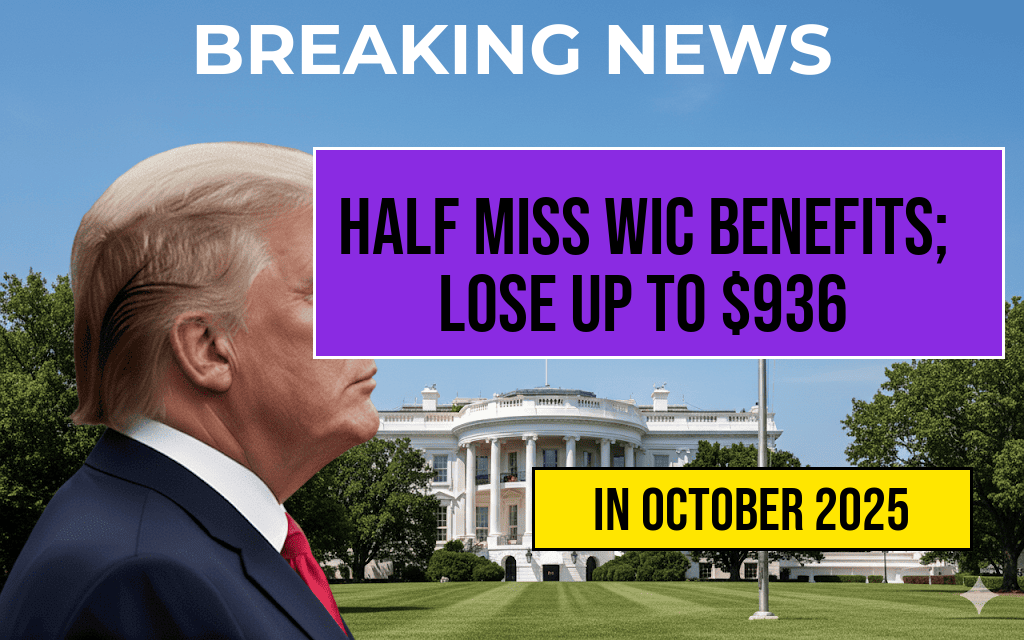Recent findings reveal that nearly half of eligible individuals are missing out on the Special Supplemental Nutrition Program for Women, Infants, and Children (WIC), leading to a staggering annual loss of produce funds that ranges from $312 to $936 per household. This underutilization of benefits highlights significant gaps in outreach and awareness among families who could greatly benefit from the program. Designed to provide nutritional assistance to low-income pregnant women, breastfeeding mothers, and young children, WIC offers vital support in the form of vouchers for fresh fruits, vegetables, and other healthy foods. The implications of this data underscore not only the financial burden on families but also the potential impact on public health as access to nutritious food becomes increasingly crucial.
Understanding WIC and Its Benefits
The WIC program plays a critical role in ensuring that vulnerable populations have access to nutritious food. Administered by the U.S. Department of Agriculture (USDA), WIC provides resources to help improve the health of mothers and young children. Eligible participants receive:
- Nutrition education
- Breastfeeding support
- Vouchers for purchasing healthy foods, including fruits and vegetables
These benefits are especially important as they not only address immediate food needs but also contribute to long-term health outcomes for mothers and their children. However, a lack of awareness about eligibility and application processes is preventing many families from taking advantage of this essential program.
Key Statistics on WIC Participation
According to recent reports, approximately 50% of those eligible for WIC benefits do not enroll or utilize the program effectively. This statistic points to a significant opportunity for improvement in outreach initiatives. The benefits provided through WIC are substantial, yet many families are unaware of how to access them, or they may face barriers such as lack of transportation or complicated application procedures.
| Household Size | Annual Loss of Produce Funds ($) |
|---|---|
| 1 | 312 |
| 2 | 624 |
| 3 | 936 |
Barriers to Accessing WIC Benefits
The reasons for low participation in WIC are multifaceted. Some of the primary barriers include:
- Lack of Awareness: Many eligible individuals do not know they qualify for WIC or how to enroll.
- Transportation Issues: Families may struggle to reach WIC centers, especially in rural areas.
- Complex Application Process: The paperwork can be daunting, discouraging potential applicants from pursuing benefits.
Addressing these barriers is essential for increasing enrollment and ensuring that families receive the support they need. Community organizations and local health departments play a critical role in facilitating outreach and making the application process more accessible.
Efforts to Improve WIC Awareness
Various initiatives are underway to enhance awareness and participation in the WIC program. State and local agencies are developing campaigns aimed at educating communities about the benefits of WIC. These efforts include:
- Social media outreach to spread information quickly and effectively
- Partnerships with local food banks and community organizations
- Workshops and informational sessions to simplify the application process
By strengthening these outreach efforts, advocates believe that more families will be able to access the nutritional support they need. Ensuring that eligible individuals are aware of their benefits can lead to healthier communities and improved public health outcomes.
The Road Ahead
As the data highlights significant losses in potential benefits for families, it is crucial for stakeholders to collaborate on strategies that enhance WIC participation. By focusing on education, simplifying the application process, and addressing logistical barriers, communities can work towards ensuring that every eligible family has access to the vital resources provided by WIC.
For further information about WIC and its benefits, you can visit the USDA WIC page or explore resources from the National Agricultural Library.
Frequently Asked Questions
What is the WIC program?
The WIC program (Women, Infants, and Children) is a federal assistance program that provides nutrition education, healthy food, and support to low-income pregnant women, new mothers, and young children to promote better health outcomes.
Why are eligible individuals missing out on WIC benefits?
Many eligible individuals miss out on WIC benefits due to a lack of awareness, complicated application processes, or misconceptions about eligibility requirements.
How much money do eligible individuals lose by not participating in WIC?
Eligible individuals who do not participate in the program can lose between $312 to $936 annually in produce funds that could be used for purchasing healthy fruits and vegetables.
What can be done to increase participation in the WIC program?
To increase participation, outreach efforts should focus on educating communities about the benefits of WIC, simplifying the application process, and addressing any misconceptions about eligibility.
How does WIC support healthy eating?
WIC supports healthy eating by providing participants with access to nutritious foods, nutrition education, and counseling on healthy eating habits, ultimately promoting better health for mothers and children.






